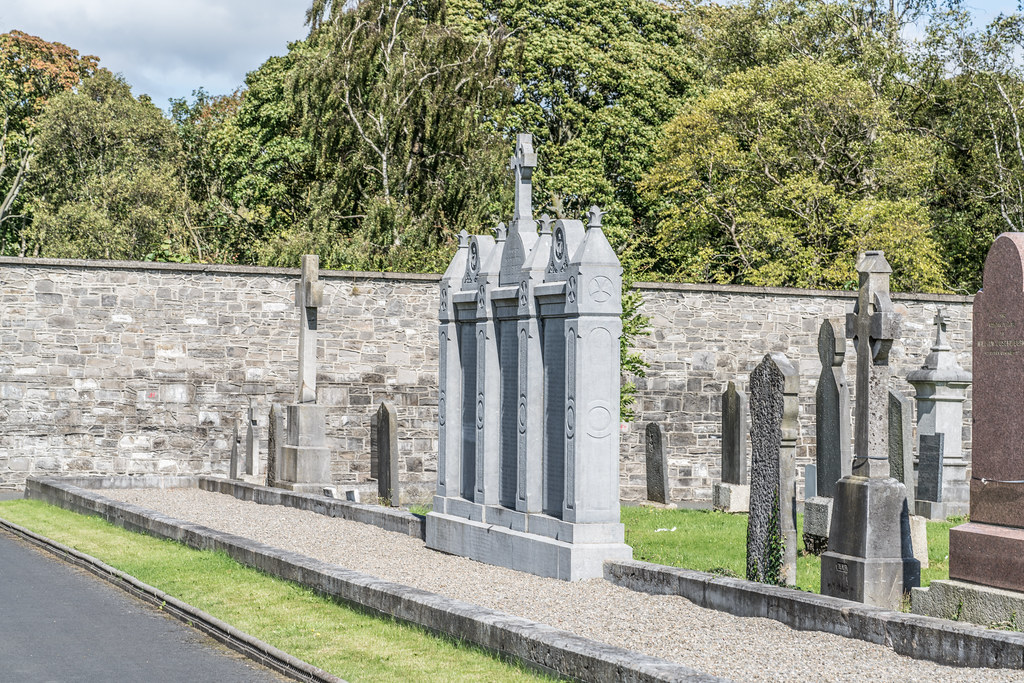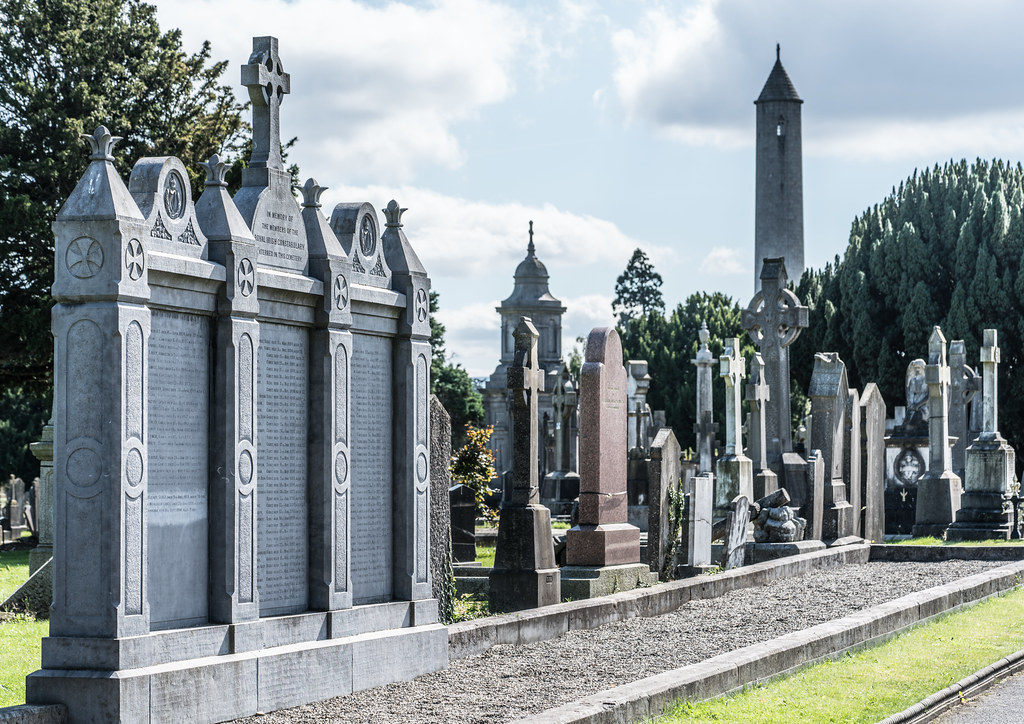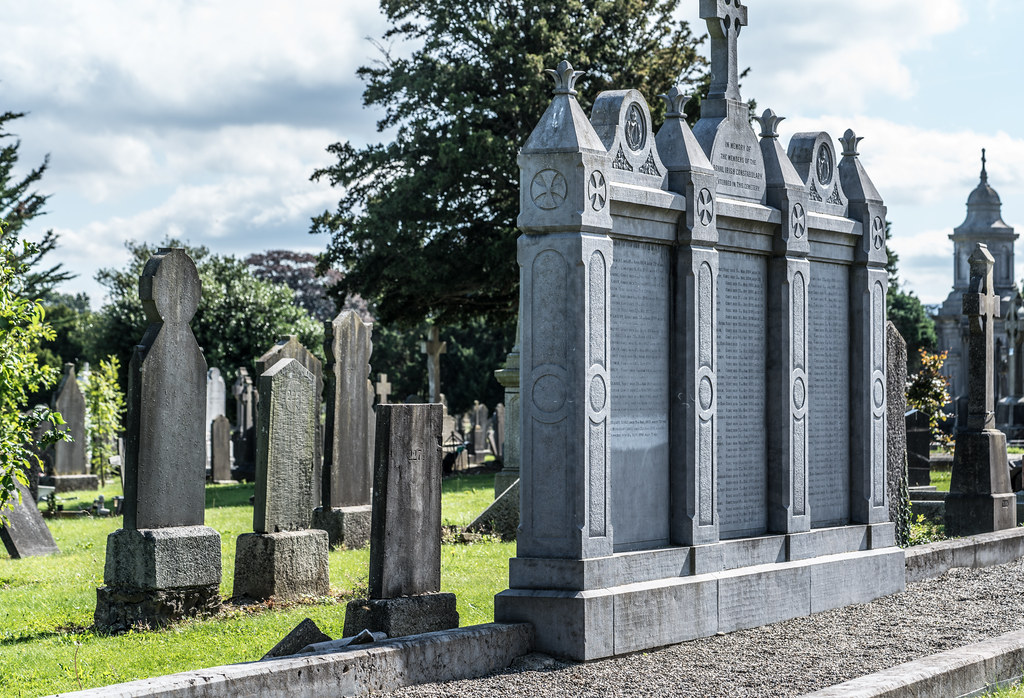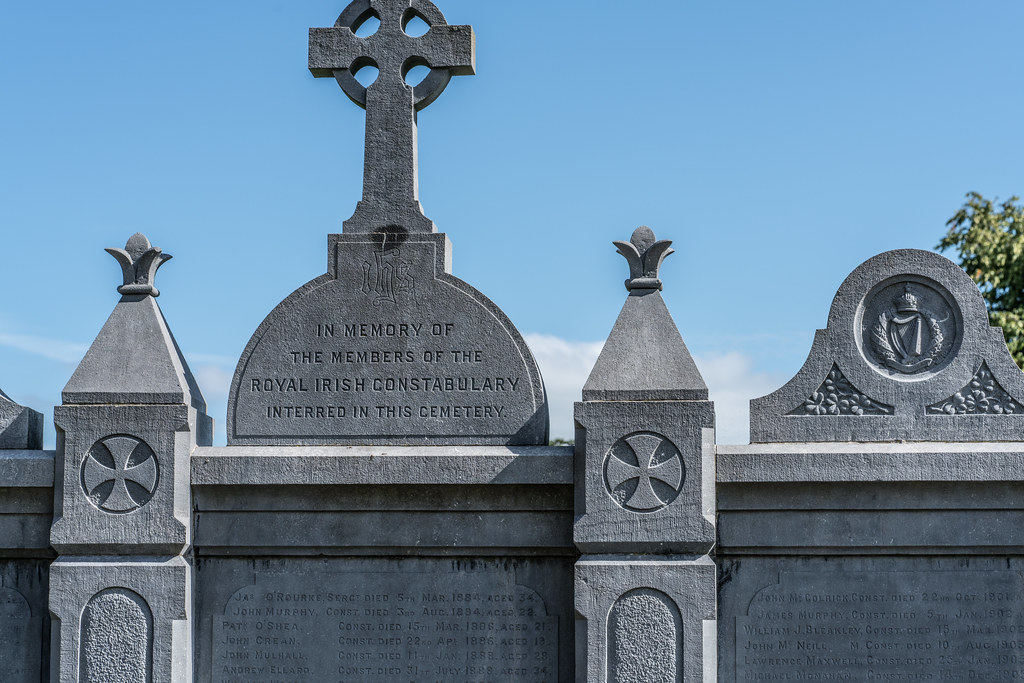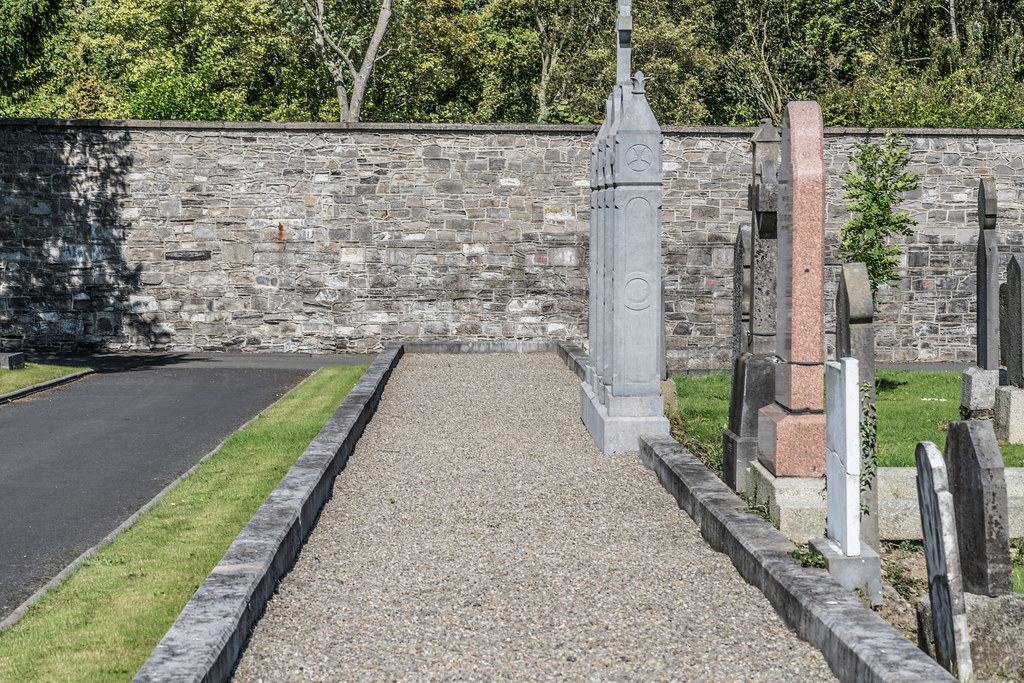
Custom Search
THE GREEN MENU OPTIONS ARE MOBILE FRIENDLY AND ARE FASTER SO THEY ARE RECOMMENDED. THE RED MENU OPTIONS ARE SOMEWHAT SLOWER DEPENDING ON YOUR DEVICE OR BROWSER AND ARE MORE SUITABLE FOR DESKTOPS AND LAPTOPS. THE BLUE OPTIONS ARE PAGE LINKS AND WILL BE PHASED OUT GOING FORWARD
THE RIC PLOT IN GLASNEVIN [THE ROYAL IRISH CONSTABULARY]
Friday, August 24, 2012: “A number of retired police officers from the Republic and Northern Ireland intend gathering at Glasnevin Cemetery this coming Saturday at 2.30pm to commemorate the disbandment of the Royal Irish Constabulary (RIC) and the Dublin Metropolitan Police (DMP)”
The Royal Irish Constabulary (RIC simply called the Irish Constabulary 1836–67) was the armed police force of the United Kingdom in Ireland from the early nineteenth century until 1922. A separate civic police force, the unarmed Dublin Metropolitan Police controlled the capital, and the cities of Derry and Belfast, originally with their own police forces, later had special divisions within the RIC. About seventy-five percent of the RIC were Roman Catholic and about twenty-five percent were of various Protestant denominations, the Catholics mainly constables and the Protestants officers. The RIC's successful system of policing influenced the armed Canadian North-West Mounted Police (predecessor of the Royal Canadian Mounted Police), the armed Victoria Police force in Australia, and the armed Royal Newfoundland Constabulary in Newfoundland. In consequence of the Anglo-Irish Treaty, the RIC was disbanded in 1922 and was replaced by the Garda Síochána in the Irish Free State and the Royal Ulster Constabulary in Northern Ireland.
The Royal Irish Constabulary (RIC simply called the Irish Constabulary 1836–67) was the armed police force of the United Kingdom in Ireland from the early nineteenth century until 1922. A separate civic police force, the unarmed Dublin Metropolitan Police controlled the capital, and the cities of Derry and Belfast, originally with their own police forces, later had special divisions within the RIC. About seventy-five percent of the RIC were Roman Catholic and about twenty-five percent were of various Protestant denominations, the Catholics mainly constables and the Protestants officers. The RIC's successful system of policing influenced the armed Canadian North-West Mounted Police (predecessor of the Royal Canadian Mounted Police), the armed Victoria Police force in Australia, and the armed Royal Newfoundland Constabulary in Newfoundland. In consequence of the Anglo-Irish Treaty, the RIC was disbanded in 1922 and was replaced by the Garda Síochána in the Irish Free State and the Royal Ulster Constabulary in Northern Ireland.
SORRY FORRY FOR THE DELAY
